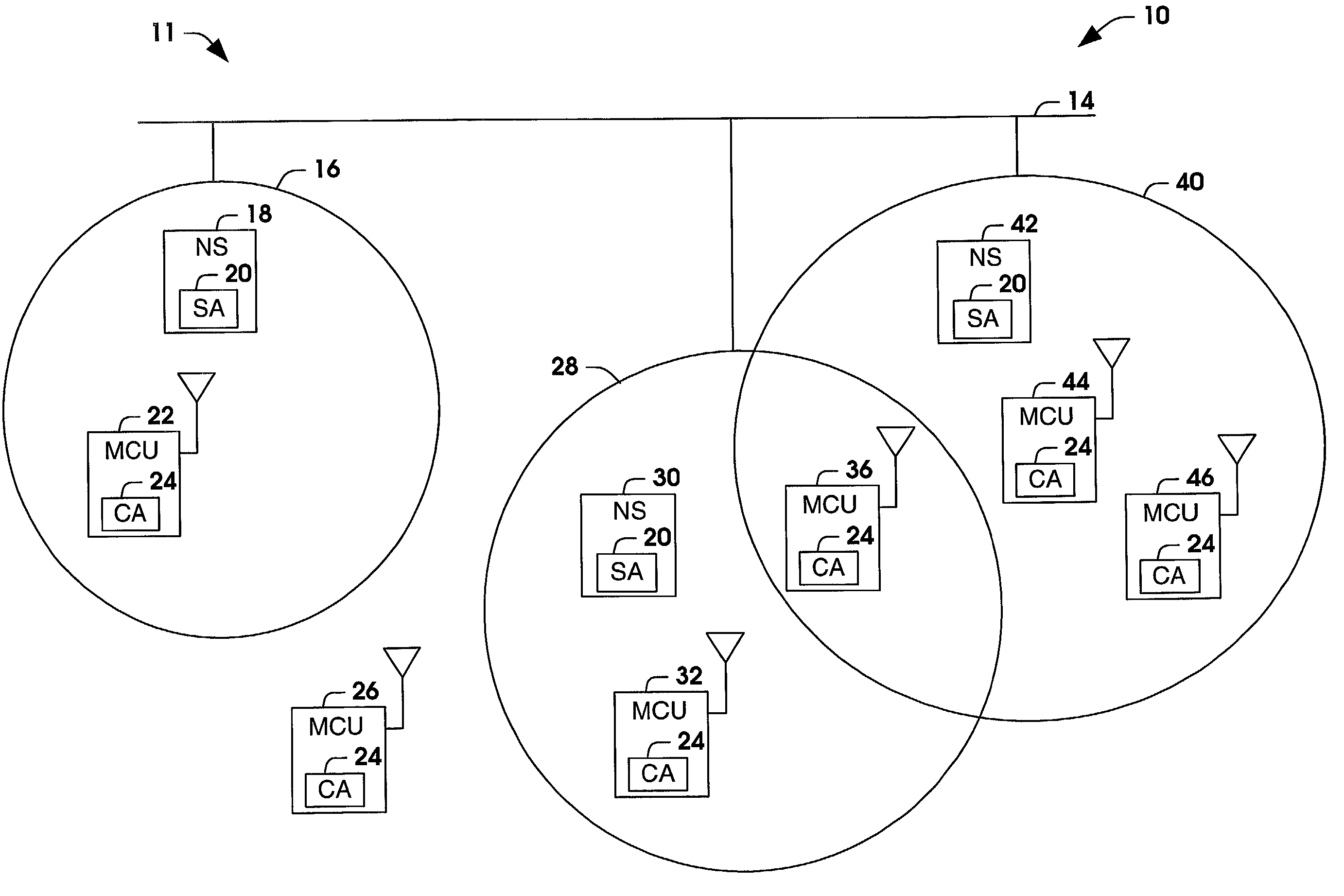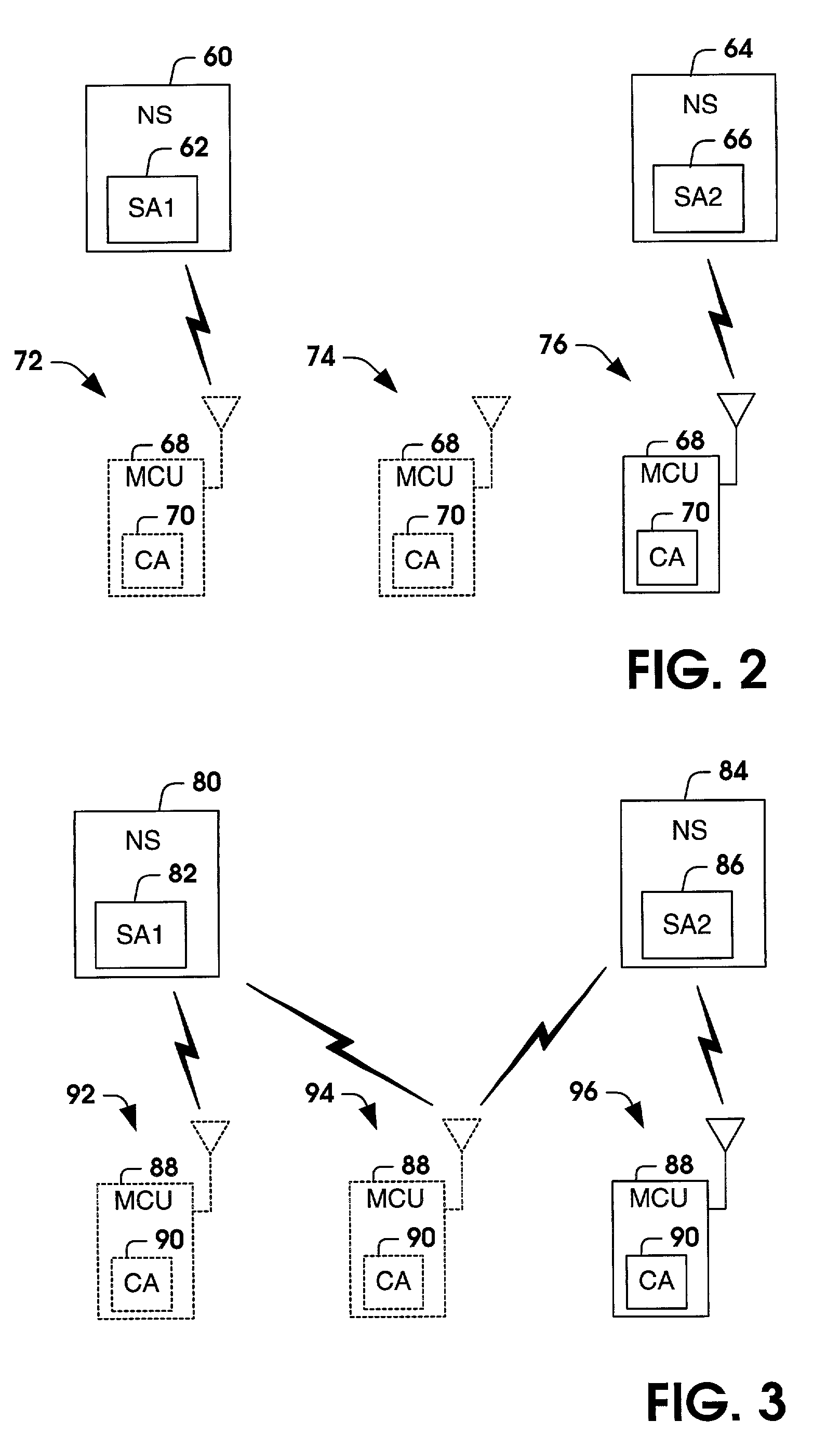Internet protocol collaborative mobility
a technology of collaborative mobility and Internet protocol, applied in the field of communication, can solve the problems of burdening the overhead associated with the network layer, mobile networks provide many additional challenges, and conventional networks do not provide solutions to these problems within their specific domains, and achieve the effect of enhancing standard domain naming and minimizing disruption
- Summary
- Abstract
- Description
- Claims
- Application Information
AI Technical Summary
Benefits of technology
Problems solved by technology
Method used
Image
Examples
Embodiment Construction
[0023] The present invention provides for systems and methods for maintaining communications with mobile users within organizational groups (e.g., logical networks, subnetworks) when transitioning from group to group. Communication is maintained automatically and transparent to any human user interaction. The present invention provides a user mobility mechanism that operates completely above the session layer and without burdening the network layer with the tracking and location of mobile users. Intelligent mobility agents are provided in both logical network servers (server mobility agents) and MCUs (client mobility agents). The client mobility agents and server mobility agents collaborate to reassign or re-home a MCU to a new home group and new IP address upon entering a new logical network. The intelligent mobility agents can employ COTS software and hardware services to provide the desired mobility functionality above the session layers.
[0024] Groups consist of collections of us...
PUM
 Login to View More
Login to View More Abstract
Description
Claims
Application Information
 Login to View More
Login to View More - R&D
- Intellectual Property
- Life Sciences
- Materials
- Tech Scout
- Unparalleled Data Quality
- Higher Quality Content
- 60% Fewer Hallucinations
Browse by: Latest US Patents, China's latest patents, Technical Efficacy Thesaurus, Application Domain, Technology Topic, Popular Technical Reports.
© 2025 PatSnap. All rights reserved.Legal|Privacy policy|Modern Slavery Act Transparency Statement|Sitemap|About US| Contact US: help@patsnap.com



